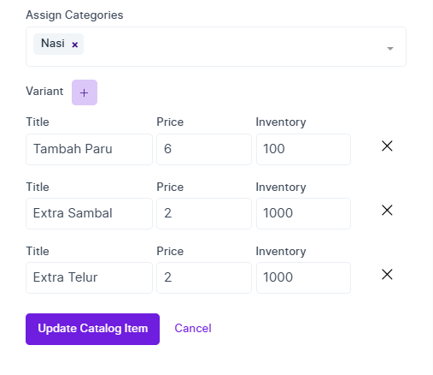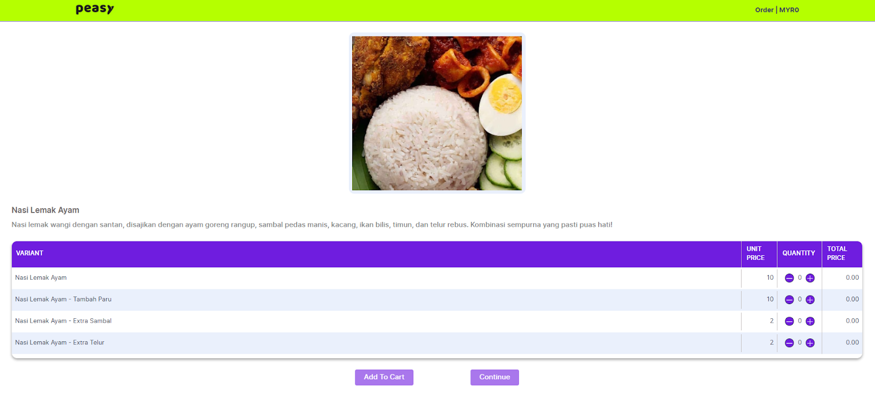Which item should I place into my catalog? #
Setting up your online menu strategically can help you drive more sales!
We recommend that you choose at least 10 of your best selling items, and feature them in your menu. Some questions you may asks your business are as below:
- Which food/drink are the most frequently or commonly ordered by your customers?
- Which food/drink sells out the fastest
- Which food/drink yields the highest profit margin for your restaurant?
Create categories in your menu; such as “Popular,” “Bestsellers,” or “Chef’s Recommendation” for maximum visibility.
Why Should I Feature My Top 10 Best-Sellers? #
✅ Customers decide FAST – A cluttered menu makes them hesitate, but clear recommendations help them order quickly.
✅ Boost order value – People tend to order what’s already popular. Highlighting your best items encourages larger orders.
✅ Less decision fatigue – Too many choices overwhelm customers. Featuring a top 10 makes ordering effortless.
💡 Example: A restaurant added a “Customer Favorites” category with their 10 best dishes. Orders increased by 35% in just a week because customers trusted the recommendations!
Best practices for setting my catalog item’s image #
Common Mistake | Best Practice |
❌ No images or using low-quality, blurry photos. | ✅ Use clear, high-resolution images taken in good lighting. |
❌ Using stock photos that don’t represent the actual dish. | ✅ Upload real photos of your food so customers know what to expect. |
❌ No consistency – some menu items have images, some don’t. | ✅ Ensure every item has an image for a uniform look. |
🔹 Example:
Imagine you run a cafe selling croissants. Instead of uploading a generic croissant image, take a real photo of your buttery, flaky croissant served with jam. A delicious, golden-brown croissant with glossy jam next to it will tempt customers to order.
💡 Pro Tip: You don’t need a DSLR! A good smartphone camera, natural lighting, and a clean background can make your food look amazing.
How to write my product description so that I can encourage organic customers from Google Search #
A well-written menu description makes your dish more appealing and helps your menu appear in Google searches when customers look for food online.
Common Mistake | Best Practice |
❌ Boring or unclear descriptions like “Croissant” | ✅ Engaging descriptions: “Buttery, flaky croissant baked fresh daily, served with house-made strawberry jam.” |
❌ No keywords in descriptions | ✅ Use SEO-friendly keywords to help customers find your food. |
Example:
Instead of writing just “Cheese Croissant”, write:
✅ “Melted Cheese Croissant – Flaky golden croissant stuffed with gooey melted cheddar, perfect for a quick breakfast or snack!”
This description is more appealing and contains keywords people search for (e.g., “Melted Cheese Croissant,” “quick breakfast,” “snack”).
How to increase my revenue with the right pricing strategy? #
Pricing is not just about covering costs—it’s about maximizing profits while keeping customers happy. Here’s how you can apply smart pricing strategies to boost revenue.
Pricing Strategy | How It Works | Example (Burger Restaurant) | Breakdown Details |
Break-Even Pricing | Calculate the minimum price needed to cover costs and ensure profit. | A cheeseburger costs RM5 to make (ingredients, rent, labor). To ensure profit, it’s sold at RM12. | Cost breakdown: Ingredients: RM3 Rent & Utilities: RM1 Labor: RM1 Total Cost: RM5 Selling Price: RM12 Profit per burger: RM7 |
Dynamic Pricing | Adjust prices based on demand (peak/off-peak hours). | Lunch & dinner peak hour price: RM14 per burger. Off-peak (3-5PM): RM10 with a free drink. | Peak Hour Price: RM14 (higher demand, maximize profit) Off-Peak Discount: RM10 + Free drink (increase sales during slow periods) Result: Maximized profit during busy times, steady sales during slow hours |
Bundle & Upsell Pricing | Offer value combos to encourage larger purchases. | Cheeseburger alone = RM12. Cheeseburger + Fries + Drink = RM15 (instead of RM20). | Ala Carte: Burger: RM12, Fries: RM5, Drink: RM3 Combo Price: RM15 (instead of RM20) Perceived Savings: RM5 Result: More customers buy combos, increasing total sales volume |
Psychological Pricing | Use price perception tactics to make deals look more attractive. | Instead of pricing at RM10, list it as RM9.90 to feel like a better deal. | Why does it work? RM9.90 looks cheaper than RM10, even if the difference is only RM0.10. Example: RM10 → RM9.90 Result: More customers are likely to buy due to perceived affordability. |
High-Margin Add-Ons | Offer profitable upgrades that cost little but add value. | Customers can add extra cheese or a fried egg for RM2 each (costs only RM0.50 to provide). | Add-On Cost: Cheese/Fried Egg: RM0.50 Selling Price: RM2 Profit per add-on: RM1.50 Result: Small upgrades significantly boost revenue with minimal cost. |
💡 Pro Tip: Use Peasy’s sales reporting to see which pricing strategy works best for your burger sales and adjust accordingly!
How to allow my customers to purchase add-ons and/or meal combos using variants? #
Variants in Peasy allow customers to choose from different options within the same item. These can be used for:
✅ Meal Sizes – Small, Medium, Large.
✅ Customization – Extra cheese, double patty, less sugar.
✅ Combos – Upgrade to a meal with fries and drinks.
✅ Toppings & Add-ons – Extra sauces, side dishes.
Your Peasy Sales Catalog Item’s view with Variants:

Customer’s Online menu view with Variants:

💡 Pro Tip: Keep add-ons simple and relevant to the meal to make decision-making easier for customers.
Tips to maximise your Variants #
✅Use Simple & Clear Names – Example: “Upgrade to Set (Fries + Drink)” instead of “Combo A.”
✅Highlight Best-Selling Upgrades – Example: “Most Customers Add Extra Cheese (+RM2).”
✅Use Psychological Pricing – Example: RM9.90 instead of RM10.
✅Offer Value Combos that will drive up AOV
One of the best ways to increase your restaurant’s average order value (AOV) is by offering add-ons and meal combos. Create combos that will upsell and encourage higher order value
How to Calculate Your AOV?
AOV = Total Revenue ÷ Total Number of Orders
Example Calculation:
- In a day, your restaurant makes RM2,500 from 250 orders.
AOV = RM2,500 ÷ 250 = RM10 per order.



